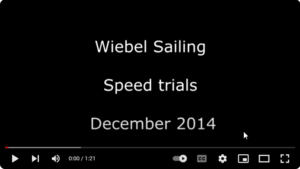
SPEED TRIAL OCTOBER 2013
Here is a video of a recent speed trial in wave action. We hope you like it.
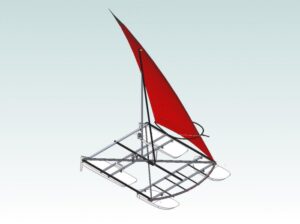
THE ERA OF THE QUAD HAD BEGUN
The Wiebel boat has four planing pods. See the image. Why? Well, the simple answer is, the boat has four planing pods because a car has four wheels. It provides maximal stability and a minimal contact with the water. Three may also work, but four provides a good roll axis on both the left side and the right side of the boat. Another way of putting it is that the boat needs a stepped hull on both
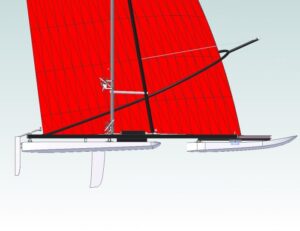
STEPPED HULL
In side view, Wiebel has a stepped hull. This means that the boat has a great pitch stability. There is no risk of nose diving, as many cats have. There is also no risk of a back flip. Moreover, a minimal wetted surface can be achieved at all speeds. When sailing, the two weatherside boards are out of the water, resulting in the sailboat sailing on the two leeside boards. The roll angles and pitch angles of

DOUBLE ACTION SAIL
‘ Sailrocket has proven many things in its record runs. One of the most important things that Sailrocket has proven is that a high speed sailboat needs to have a double action rig, i.e. a sail/wing that produces both thrust and lift. It is the combination of thrust and lift that pulls the boat upwards and drives the boat over the water. Designing sails/wings has become a three dimensional puzzle. The optimisation of the airflow is not
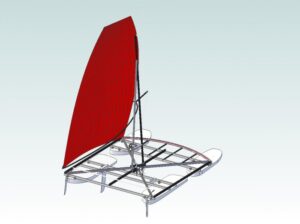
THE RAIL
The rail is an important part of the Wiebel design. The rail is an important part of the Wiebel design. It allows the mastfoot to move from left to right. The mastfoot is a slider which slides along the rail. This makes it possible to change tack by jibing. A winch is provided centrally on the frame with which the sailor can move the mastfoot from left to right and vice versa. In this way, fast jibing
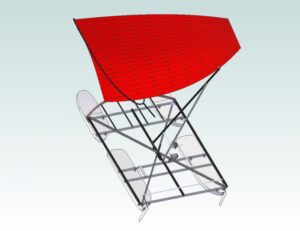
JIBING
In the second generation Wiebel rig, the way in which the boat changes tack has been improved. The boat is designed to jibe. During the jibe, the boom swings over the bow over an angle of more than 270 degrees. In the second generation Wiebel rig, the way in which the boat changes tack has been improved. The boat is designed to jibe. During the jibe, the boom swings over the bow over an angle of more
